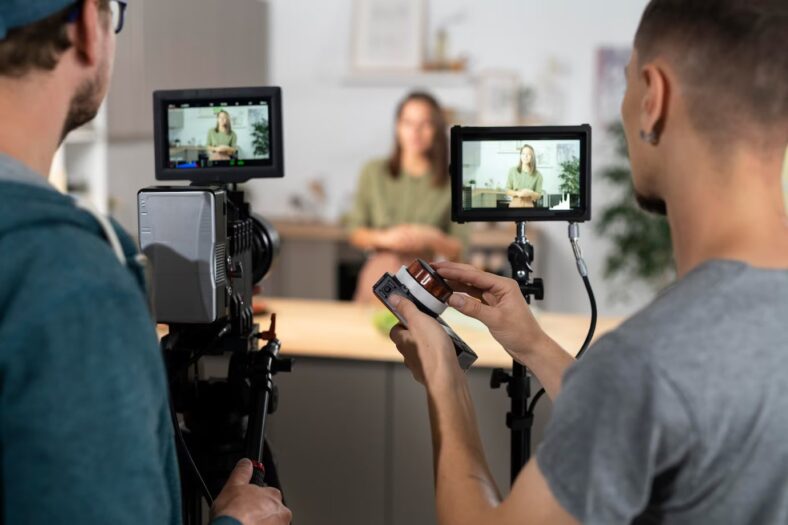Interviews are more than just conversations. They are an opportunity to connect with your audience on a deeper level, conveying emotions, stories, and insights in a compelling way. Whether you’re a seasoned filmmaker or a novice videographer, employing creative techniques can elevate your interviews from ordinary to extraordinary. Here are eight inventive approaches to make your filmed interviews stand out.
1. Playing with Angles and Perspectives
The traditional head-on shot has its place, but experimenting with different angles and perspectives can add depth and interest to your interviews. Try shooting from a lower angle to give your subject a more commanding presence, or use a high angle for a more vulnerable look. Incorporating unconventional perspectives, such as a bird’s-eye view or a profile shot, can also add a fresh dynamic to the conversation.
2. Creative Lighting Techniques
Lighting can dramatically alter the mood and tone of your interview. Instead of relying on standard three-point lighting, consider using natural light to create a softer, more authentic feel. Alternatively, playing with shadows or using colored lighting can evoke certain emotions or underscore the theme of your interview. Remember, the way you light your subject can say just as much as the words they speak.
3. Incorporating Movement
Static shots can sometimes feel stagnant. By introducing movement, you create a more engaging viewing experience. This can be as simple as handheld shots to add a sense of immediacy or using sliders and gimbals for smooth motion. Even subtle movements, like a slow zoom or a gentle pan, can draw viewers in and emphasize important moments.
4. Dynamic Backgrounds and Locations
The setting of your interview can greatly influence its impact. Instead of static backdrops, consider filming in dynamic locations that relate to your subject’s story or expertise. This could be outdoors in a meaningful setting, amidst action relevant to the topic, or in a place that visually represents the theme of the interview. A well-chosen location can add a whole new layer of meaning and engagement.
5. Multi-Camera Setups
Using multiple cameras allows you to capture various angles simultaneously, making your interview more dynamic and visually interesting. This approach enables you to switch between wide shots, close-ups, and reaction shots without interrupting the flow of the interview. It also offers greater flexibility in post-production, allowing you to choose the most impactful shots.
6. Engaging with the Environment
Encourage your subjects to interact with their surroundings. This can help to reveal their personality and make the interview feel more natural and relaxed. Whether it’s walking through a location, showing objects of personal significance, or performing a task related to their expertise, this technique helps to tell a richer story beyond the conversation.
7. Creative Post-Production Effects
In post-production, there’s a wealth of creative effects at your disposal to enhance your interview. This could range from interesting transitions, color grading to set the tone, to incorporating graphics or animations that complement the dialogue. Use these tools judanly to add to the storytelling without overwhelming the content.
8. Innovative Audio Techniques
Audio is just as crucial as visuals. Incorporating ambient sounds from the interview’s location can add atmosphere and context. Music can also play a powerful role in setting the tone and pace of the interview. Experimenting with the audio landscape can make your interview more immersive and emotionally resonant.
Breath Life into Your Interviews
Employing these eight creative techniques can transform your interviews into compelling visual narratives that captivate your audience. Remember, the goal is to enhance the storytelling aspect of your interviews, bringing out the personality of your subjects, and engaging your viewers on a deeper level. With some creativity and experimentation, you can turn ordinary interviews into unforgettable stories that resonate long after the screen fades to black.
